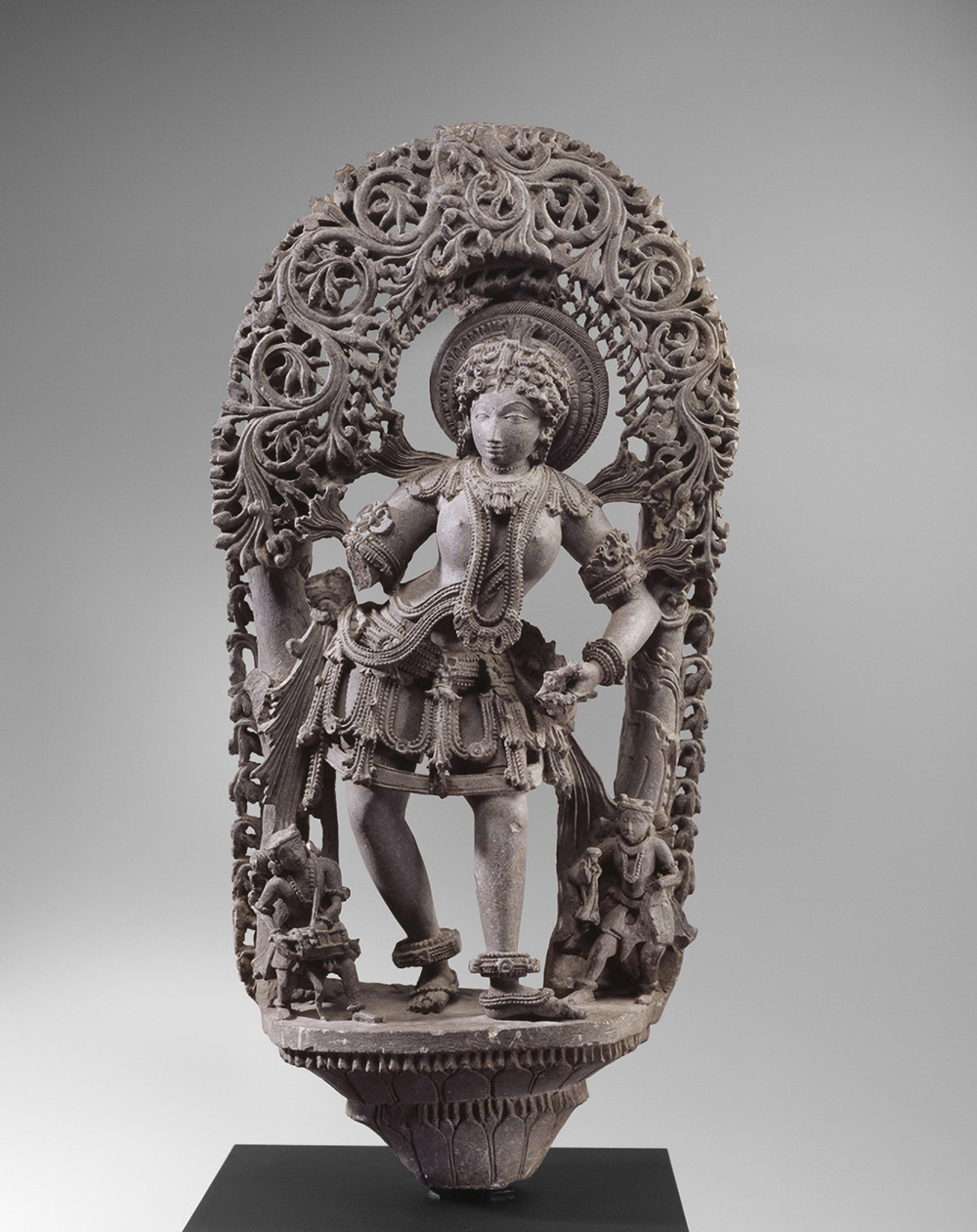
Dancer Accompanied by Musicians, circa 1150, India; Karnataka, stone, Virginia Museum of Fine Arts, Richmond, Arthur and Margaret Glasgow Fund, 82.207
Hello, my name is Emily Holtrop. I am the director of learning and interpretation at the Cincinnati Art Museum. I will be reading the Glorification section for Beyond Bollywood: 2000 Years of Dance in Art.
Dancers, celestial and mortal, perform to honor both gods and kings. Having a corps of dancers attached to the palace was customary for royalty and seen as an attribute of kingship. It was also a way to connect royal and divine power through association with Indra, the king of the gods, who is perpetually entertained by heavenly dancers.
Dance was (and is) important in some royal ceremonies, where both joy and reverence are communicated through dance. Mughal emperors incorporated dance in significant life milestones such as wedding and birth celebrations. Rajasthani rulers sat in attendance in grand palace settings, witnessing dance performances while also being seen by courtiers and attendants. These dances often complicate the idea of reverence as they honor both god and king. The performers and the patrons who commission them seek both piety and compassion through performances that blur lines between devotion and entertainment.
In this way, ideas of glorification in both divine and earthly realms are conflated with dance expressing or displaying power. Sometimes it is the power of a king where the symbolism of dance is used to reinforce or magnify power. Or sometimes power is explicitly linked with an appearance of piety, as when a patron pays for dancers to enact a sacred story and then has himself painted observing.
